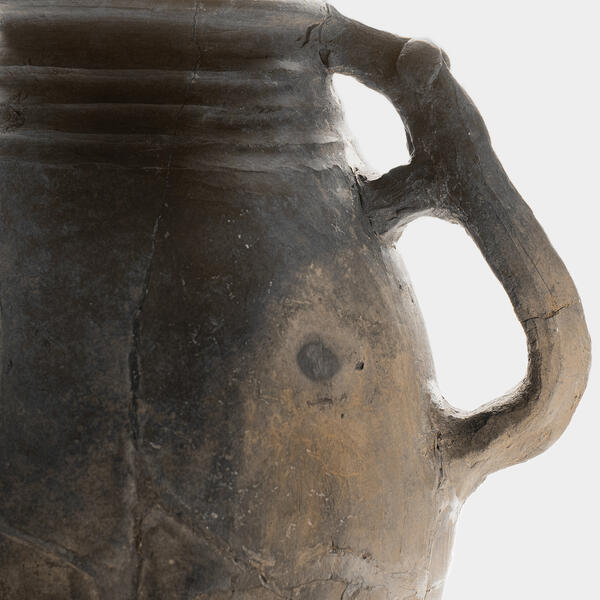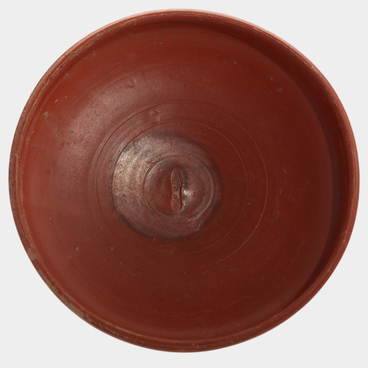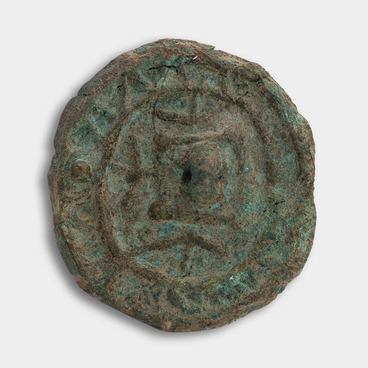The Tanais Archaeological Museum-Reserve features a Maeotian jug made in the 2nd–3rd centuries CE. This jug was used to store various liquids and originated from the Lower Don Region.
The jug features a horizontally bent rim with a rounded edge. The neck is tapering at the top. The bottom is concave. The handle is triangular in cross-section and is attached to the vessel’s shoulders and neck. Both ends of the handle are attached to the jug’s outer surface. The handle is shaped like a stylized animal figure, possibly a dog, with a protruding head at the top and round attached elements on the sides that could represent the animal’s eyes or ears. The animal’s snout touches the jug’s neck under the rim. The neck of the jug is decorated with a band of three wide and deep horizontal grooves separated by beads. The jug’s surface is gray with a polished finish.
Although archaeological evidence indicates that such jugs were used as household items, the use of zoomorphic handles could be connected to the belief in the magical power of animal imagery. For example, it was believed that such protective elements could keep the milk in the jug fresh for a longer period. However, such zoomorphic ornamentation on tableware handles may also have been dictated by Maeotian traditions and the general style of manufacturing.
Thanks to the unique shape and décor, these jugs were not just storage containers, but also true works of art. They serve as an excellent example of the skill of the Maeotian potters, who managed to combine functionality with aesthetic quality in their work. These jugs were crafted with great attention to detail, using techniques typical of Maeotian culture. The shape and design of the jug, particularly the zoomorphic handles, may have had religious or magical significance, reflecting the way of life in ancient Maeotian settlements along the Lower Don.



